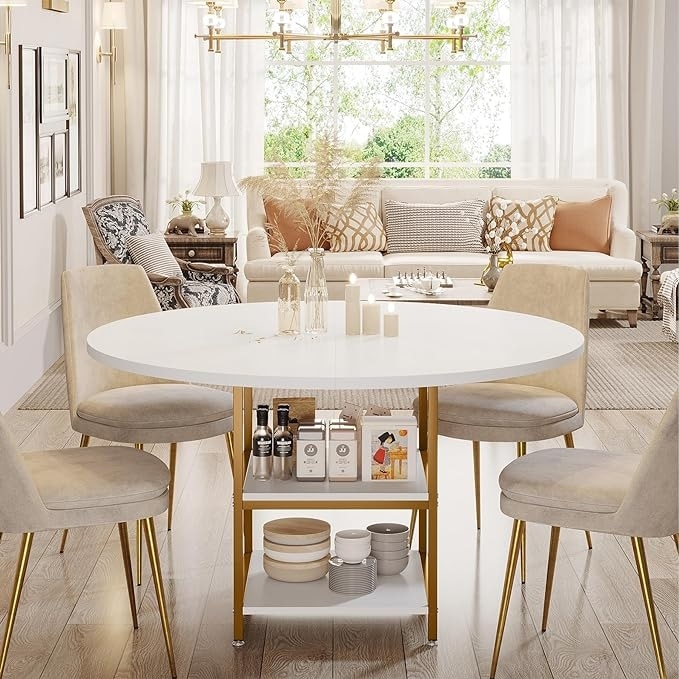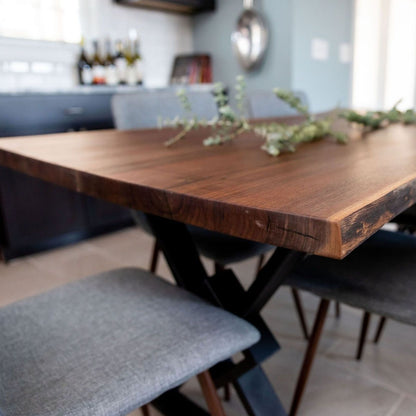Upgrade Your Furniture with Custom Dining Room Table Legs
Wiki Article
How to Choose the Perfect Dining-room Table Legs for Your Home Decoration
Selecting the optimal eating space table legs is a nuanced process that requires mindful consideration of different components, including your space restraints, aesthetic preferences, and sensible needs. The interaction between materials, styles, and dimensions can substantially influence the setting of your eating area, making it vital to approach this decision carefully.Assess Your Dining Area
Assessing your eating room is important for picking the right table legs that enhance both visual appeals and performance. Begin by measuring the dimensions of your dining location, including ceiling height, floor room, and proximity to other furnishings. This info will help identify the suitable dimension and height of your dining table, which straight influences the selection of table legs.Following, take into consideration the style and layout of your dining space. An open-concept layout might profit from table legs that offer visual lightness, such as slender metal or acrylic options. On the other hand, an extra traditional setting may ask for strong wooden legs that offer a sense of permanence.
Examine the existing shade palette and products in your dining area. Balancing the table legs with these components creates a natural look that improves the overall decor.
Inevitably, a detailed evaluation of your dining room will guide you in making an educated decision, making certain that your table legs not only enhance the aesthetic appeal yet additionally serve functional objectives.
Consider Your Style Preferences
When selecting eating area table legs, it is vital to assess your personal style choices, as they considerably affect the overall visual of your dining room. Your selection of table legs can either complement or contrast with existing decoration, making it critical to straighten them with your favored indoor style theme.If your home leans in the direction of a contemporary aesthetic, consider streamlined metal or minimalist wood legs that supply a tidy, clean appearance. For an extra typical method, luxuriant wooden legs with elaborate carvings can add a touch of beauty and refinement. Industrial styles gain from robust, raw products such as reclaimed timber and metal combinations, reflecting a rugged beauty.
Additionally, farmhouse and rustic designs commonly favor durable, beefy legs that evoke a feeling of heat and convenience. On the other hand, if your decoration is diverse, you may choose unconventional shapes or a mix of materials to produce aesthetic interest.

Evaluate Material Options
The choice of material for dining area table legs plays a pivotal function in both toughness and aesthetic appeal. Typical materials include timber, metal, and composite options, each offering distinct features that can influence the total look and long life of your table.Timber is a timeless option, understood for its warmth and versatility. Woods like oak and walnut offer extraordinary strength and can be finished in numerous stains to match any kind of decor. Softwoods like want are much more prone to scratches and damages, making them less perfect for high-traffic locations.
Metal legs, often crafted from steel or aluminum, exude modernity and commercial beauty. They are immune and extremely durable to use, making them suitable for family members with kids or constant gatherings (dining room table legs). In addition, metal can be ended up in different shades, enhancing the modification opportunities
Composite materials, such as MDF or laminate, deal cost and varied designs. While generally much less resilient than strong timber or metal, they can still give a trendy look and are often simple to maintain.
Eventually, the material you pick ought to line up with your way of living, visual preferences, and the level of use your eating table will experience.
Determine Elevation and Dimension
Selecting the proper elevation and size for your dining-room table is vital for both functionality and comfort. The typical height for dining tables typically varies from 28 to 30 inches, enabling enough legroom for many people when seated. Nonetheless, it is vital to consider the measurements of your eating area and the kinds of chairs you intend to use.
Additionally, think about the percentages of your eating area. A bigger table in a sizable area can create a grand atmosphere, while a smaller table works well in even more intimate setups. Inevitably, the appropriate height and size will harmonize with your overall design and improve the dining experience for you and your visitors.
Explore Modification Opportunities

Additionally, the design of the legs can be tailored to fit numerous styles, such as rustic, modern-day, or industrial. Tapered legs can evoke a mid-century modern-day feel, while chunky, block-style legs may reverberate with conventional or farmhouse decoration.
Property owners can also check out color finishes, from all-natural wood discolorations to repaint, enabling them to match or contrast with the tabletop and bordering design.
Furthermore, leg elevation can be adjusted to suit specific seating setups or personal choices, enhancing both convenience and functionality.
Last but not least, distinct decorations, such as carvings or ornamental braces, can further customize the table legs, making the eating experience not simply a meal however a declaration piece in the home. By thinking about these personalization choices, homeowners can create an eating area table that really reflects their originality.
Conclusion
Picking the perfect eating area table legs requires cautious consideration of different factors, including the measurements of the eating space, style preferences, material longevity, and wanted height. Personalization options even more improve the capacity to attain a natural aesthetic that matches the general style. By systematically evaluating these elements, property owners can guarantee that the selected table legs not just meet useful needs but likewise contribute positively to the eating experience and setting of the home.Picking the perfect dining room table legs is a nuanced process that needs cautious factor to consider of different aspects, including your space constraints, visual choices, and practical needs.Assessing your eating space is crucial for picking the right table legs that enhance both aesthetics and capability.When determining dimension, gauge the location where the table will certainly be placed to guarantee it fits easily, allowing for at least 36 inches of clearance around the table for very easy activity. A bigger table in a large area can produce a grand atmosphere, while a smaller sized table works well in more intimate setups.Choosing the excellent eating room table legs calls for cautious consideration of various aspects, consisting of the dimensions of the eating room, style preferences, product longevity, and wanted elevation.
Report this wiki page